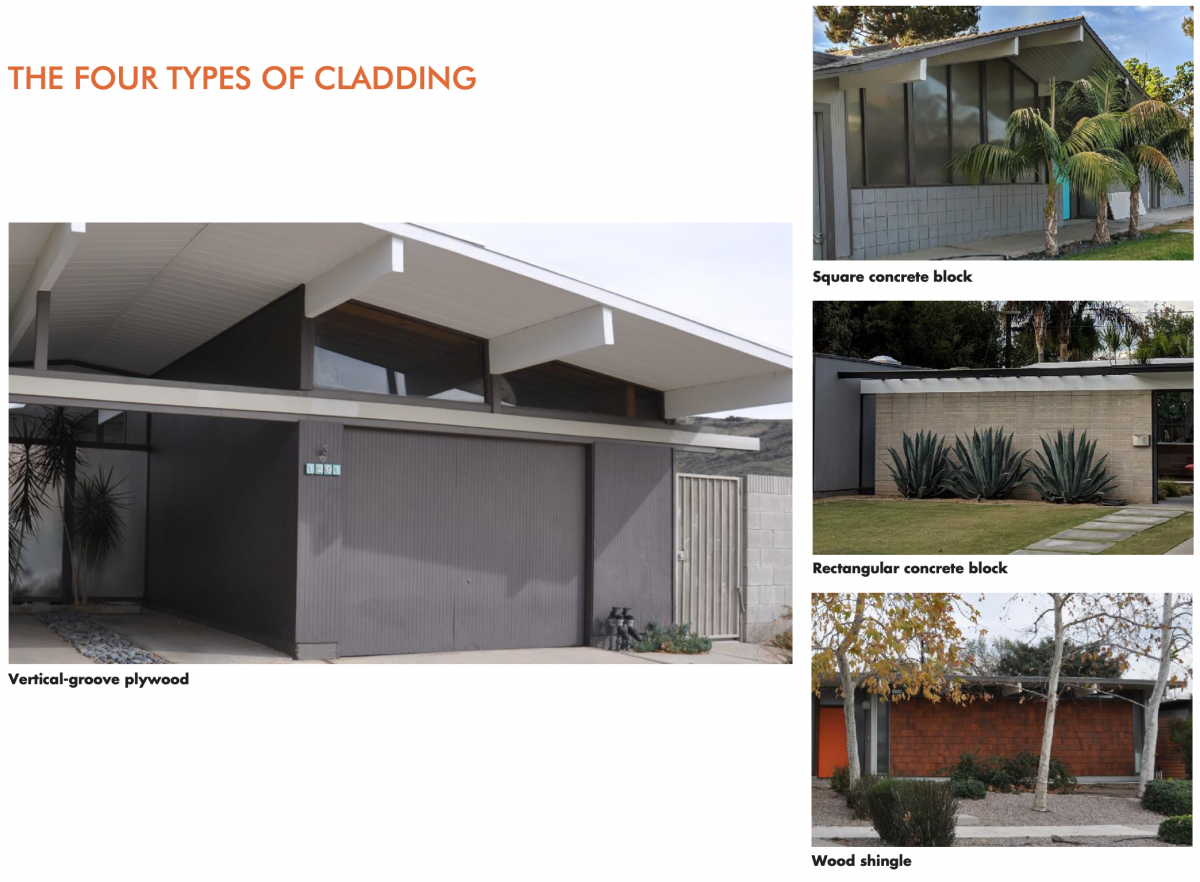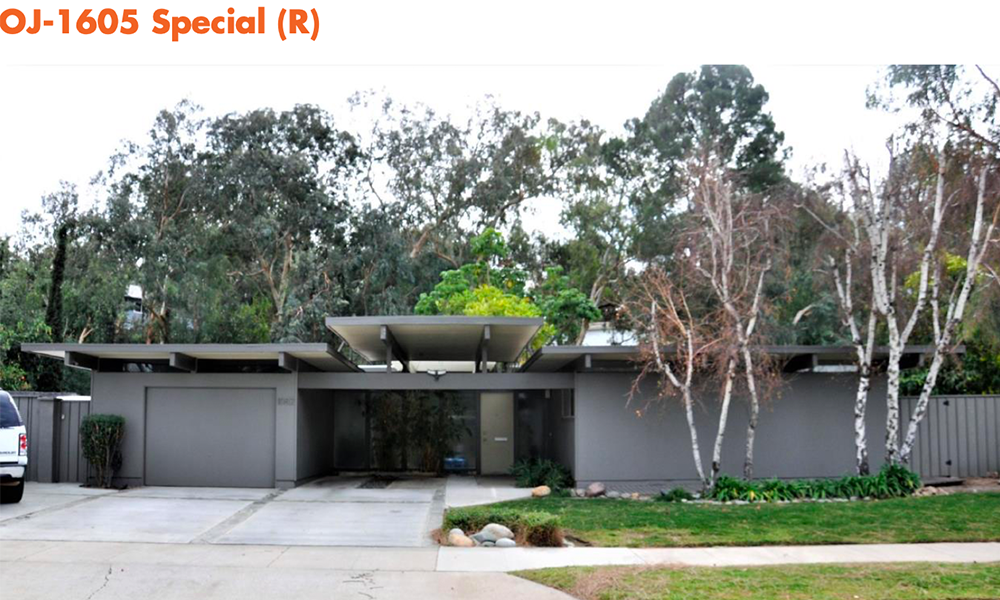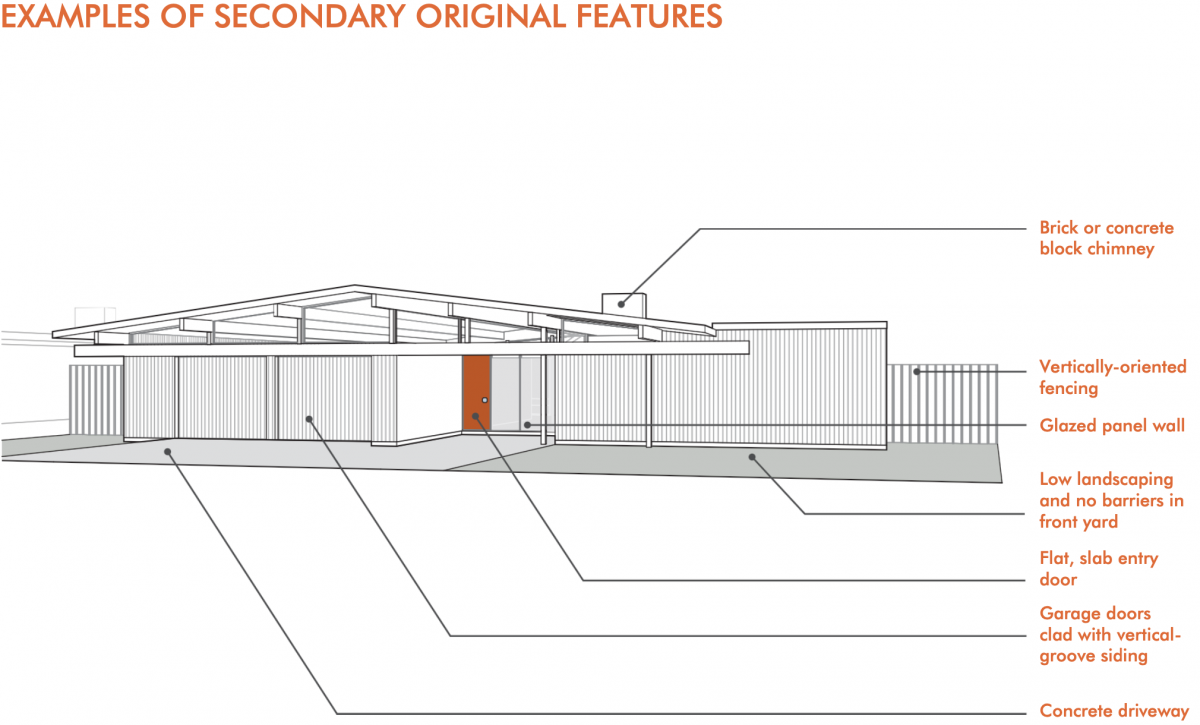
Eichlers Qualify for Tax Breaks in Orange
 |
It's been just over a year since the city of Orange turned its three Eichler neighborhoods into historic districts and adopted rules to preserve the architecture. Things seem to be going well.
The rules do not appear to be imposing burdens on homeowners seeking to remodel. And, more than two dozen owners are in line to receive significant property tax reductions under a state law called the Mills Act, which was designed to encourage the preservation and maintenance of architecturally significant buildings.
Like Orange’s 339 Eichler homes, built between 1960 and 1964 and found in three tracts: Fairhaven, Fairmeadow, and Fairhills.
“The big thing was getting it done and getting people able to use the Mills Act,” says Doug Wade, who lives in Fairmeadow and was a member of the advisory group that worked with city officials and architectural consultants from the firm Page & Turnbull as design rules were developed and plans for creating historic districts developed.
 |
Marissa Moshier, the city’s historic preservation planner, says there has been much interest among Eichler owners in seeking Mills Act tax benefits.
“For the Mills Act, we received 26 applications over two application cycles in the spring and fall. All were approved by the City Council and will go into effect for the next tax year,” she says.
Tax savings from Mills Act contracts can be significant, but Moshier could not say how much. They are of benefit primarily to people whose tax assessments are relatively high, not longtime owners whose assessments are low due to Prop 13.
“It varies a lot,” she says of the tax break. “We’re going to see with the Eichlers next year what exactly it is. The formula is set by state law, based on a property’s potential rental value.”
 |
Under the Mills Act, money homeowners save by the tax break isn’t supposed to pay for vacations or sending the kids to college.
“There is a requirement that property owners invest the amount of the tax [benefit] on rehabilitation and preservation of the historic property,” Moshier says. “We know the investment is going into the house.”
“Each [Mills Act] contract has a scope of work attached to it, a rehabilitation plan that calls for specific projects on a timeline,” she says.
Contracts last for ten years, and are automatically renewed for a like period. “In effect it runs in perpetuity,” she says.
Not every city or county in the state signs Mills Act contracts. Each contract, after all, means less tax revenue. And even some jurisdictions that do provide Mills Act benefits have a limit on the number of contracts.
 |
Not Orange, which also has a well known historic district in its Old Town. “We used to have a cap on the number we accepted every year,” Moshier says. “The City Council chose to remove that before the Eichler designation.”
“I think we were seeing increasing interest in Old Town, and we thought there would be a lot of interest in the Eichlers,” she adds.
Doug Wade, who pushed for the creation of historic districts and design standards, recalls that some people were hesitant, afraid that rules would be burdensome. So far, he says, that has not proven true.
“I’m not aware of anybody being asked to tear down anything that was a violation since [the guidelines] were adopted,” he says.
“People have been doing work on their houses, and it looks nice,” he says. “[The guidelines] certainly haven’t stopped people from upgrading the homes and making repairs. If you want to do something that requires pulling a permit, the historic district people look at it very quickly and give you their recommendations.”
 |
Moshier says there have been no complaints from the neighborhoods. She also notes that no major projects have come up for approval since the design standards were adopted.
“The Orange Eichler Design Standards seem to be working well in the Eichler Historic Districts,” she says. “We have reviewed several projects using the design standards at the staff level.
“We have not yet had a project large enough to require review by the Design Review Committee, but the staff level reviews have been good collaborations with the property owners on implementing the design standards.”
Wade says, “The bottom line is, it’s a very good thing. It prevents people from adding stuff that disrupts what you see from the street. They seem to be doing an excellent job of that. When permits are pulled, they’re making sure [homeowners] abide by those guidelines. That’s comforting to me.”
“The only restrictions,” he adds, “have to do with the front of your house, and what you see from the street.”
So far, no historic signs mark the new Eichler Historic Districts – but that may come, Wade and Moshier say. ”It’s early on in that discussion,” Moshier says.
- ‹ previous
- 212 of 677
- next ›



